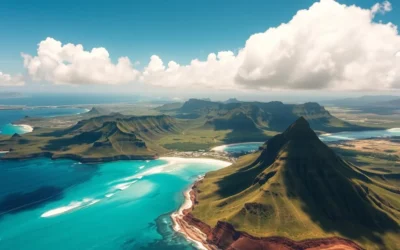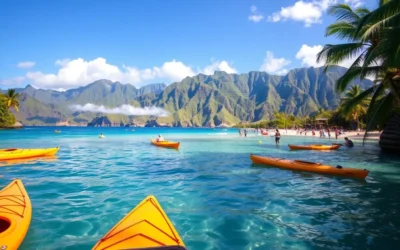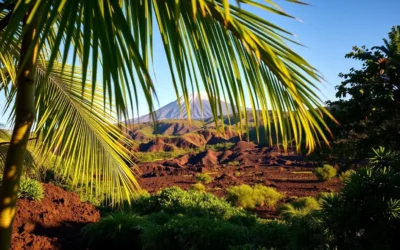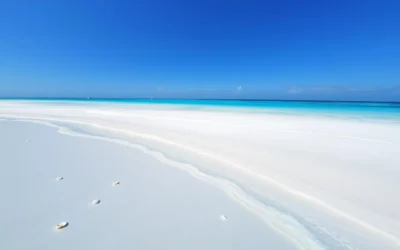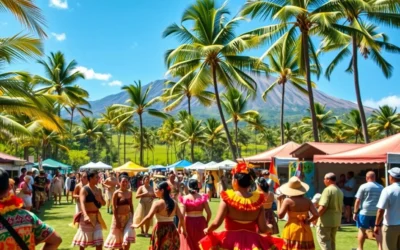✓ Tours & Activities ✓ Tours & Activities
Imagine standing on a pristine white sand beach, surrounded by crystal-clear waters that transform with the seasons. Waimea Bay Beach is a dynamic destination on O’ahu’s North Shore, offering a unique experience for visitors throughout the year.
In the summer, the bay is a tranquil haven, perfect for swimming and relaxation. As winter approaches, the bay transforms into one of the world’s most iconic surf breaks, attracting professionals from around the globe. This dramatic seasonal change makes Waimea Bay a fascinating spot to explore, and you’re about to uncover the secrets of this incredible island gem.
Discovering Waimea Bay Beach: An Overview
Nestled on Oahu’s North Shore, Waimea Bay Beach is a gem that attracts visitors worldwide. You’ll find Waimea Bay situated approximately 5 miles northeast of Haleiwa town and about 32 miles from Waikiki, making it accessible yet removed from the busier tourist areas.
Location and Significance
Waimea Bay Beach Park is located along Kamehameha Highway (Hwy83). The bay’s significance extends beyond its beauty, as it represents one of Hawaii’s most important cultural and recreational sites. The bay is a hub for diverse activities, drawing visitors year-round.
| Location | Distance from Nearby Areas |
|---|---|
| Waimea Bay Beach Park | 5 miles north of Haleiwa, 32 miles from Waikiki |
| Haleiwa Town | 5 miles southwest of Waimea Bay |
| Waikiki | 32 miles southeast of Waimea Bay |
Seasonal Transformations: Summer Calm vs. Winter Swells
You’ll witness a remarkable natural phenomenon as Waimea Bay undergoes a dramatic seasonal transformation. During summer months (May-September), you can enjoy the bay’s calm, inviting waters and pristine white sand beach, ideal for families and casual swimmers. In contrast, winter (November-February) brings spectacular swells that can reach heights of 30+ feet, attracting elite surfers and spectators to the shore.
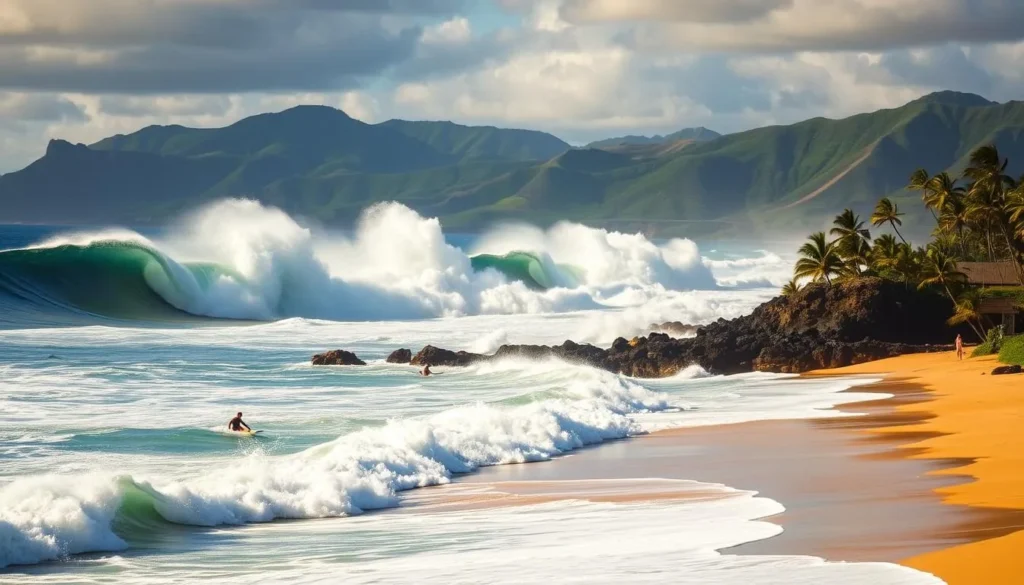
The bay’s unique geography creates ideal conditions for big wave surfing, establishing Waimea as one of the world’s most renowned surfing destinations.
Waimea Bay Beach, Oahu, Hawaii: Visitor Information and Activities
From its legendary surfing history to its tranquil summer waters, Waimea Bay Beach is a gem on Oahu’s coast that offers a variety of experiences for visitors. Whether you’re interested in swimming, snorkeling, or simply enjoying the scenic views, Waimea Bay has something for everyone.
Swimming and Snorkeling Opportunities
During the calmer summer months, Waimea Bay transforms into a swimmer’s paradise. The crystal-clear waters offer excellent swimming and snorkeling opportunities, allowing you to explore the vibrant marine life around the bay’s rocky edges. As part of the Pūpūkea Marine Life Conservation District, the bay protects local aquatic ecosystems, creating ideal conditions for observing tropical fish and occasionally sea turtles.
| Activity | Best Time | Conditions |
|---|---|---|
| Swimming | Summer | Calm, clear waters |
| Snorkeling | Summer | Clear waters, abundant marine life |
| Surfing | Winter | Large waves, suitable for experienced surfers |
Legendary Surfing History and Conditions
Waimea Bay is renowned for its big wave surfing, a legacy that began in the 1950s with pioneers like Eddie Aikau. During the winter months, the bay hosts professional surfers tackling waves that can reach heights of 30+ feet, including during the famous Eddie Aikau Big Wave Invitational. This event celebrates the bay’s status as the birthplace of big wave surfing.
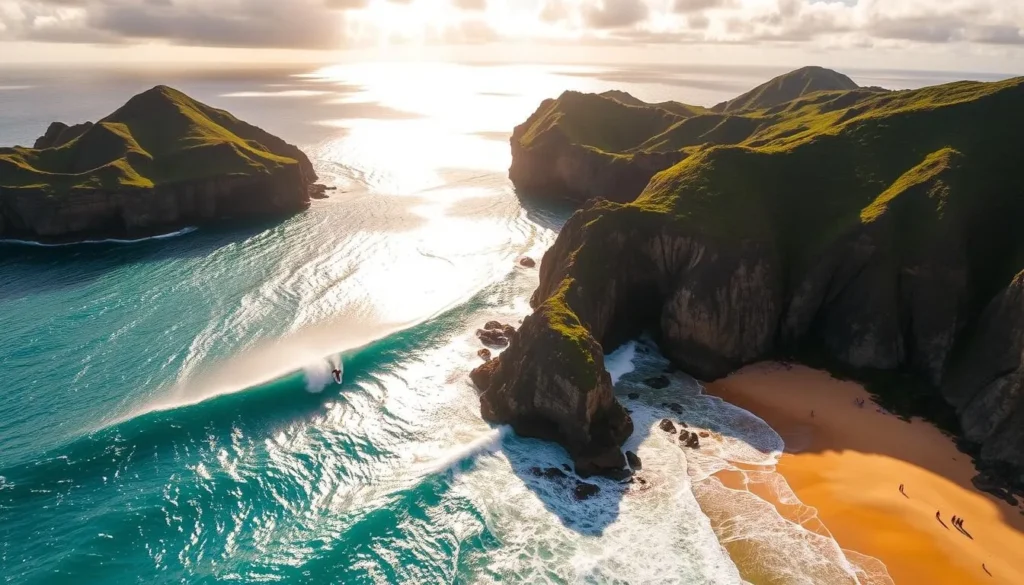
Cliff Jumping at “The Rock”
One of the bay’s most popular activities is cliff jumping from “The Rock,” a large boulder at the shoreline. Visitors gather to leap into the deep waters below during calm conditions. While lifeguards are present, cliff jumping is done at your own risk.
Safety Tips and Ocean Conditions
It’s crucial to prioritize safety by checking ocean conditions and following lifeguard instructions. Be aware that winter surf is extremely dangerous for inexperienced swimmers, and cliff jumping should only be attempted when conditions permit.
Exploring Waimea Valley
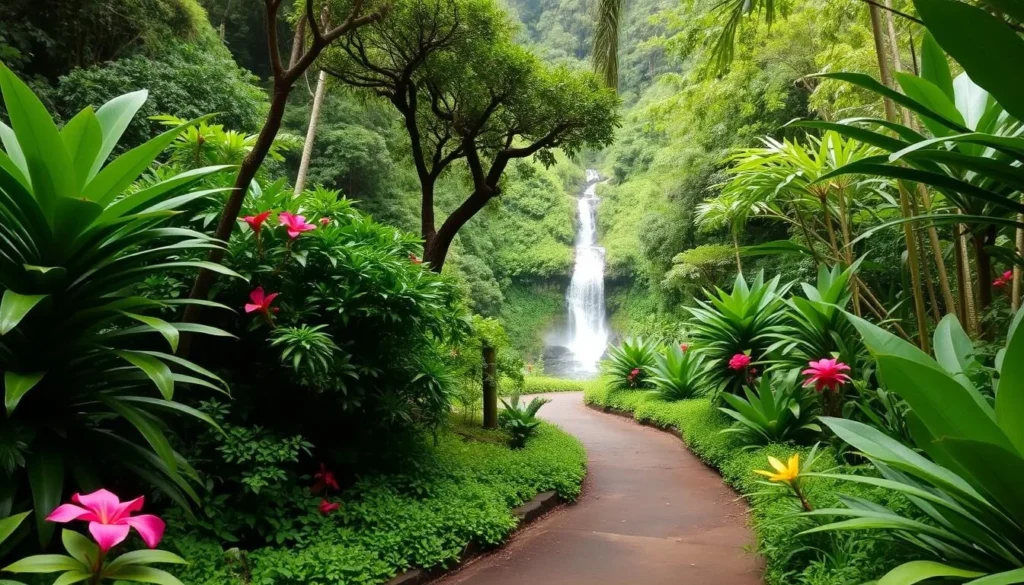
Located directly across the street from Waimea Bay Beach, Waimea Valley offers a serene escape into a lush, tropical paradise. This 1,875-acre valley is not only a haven for nature lovers but also a significant cultural site, rich in Hawaiian heritage.
Waterfall Hike and Swimming
Embark on a 1.5-mile roundtrip hike through Waimea Valley’s breathtaking landscapes, culminating in a majestic 45-foot waterfall. The natural pool beneath the falls invites you for a refreshing swim, with life jackets provided and lifeguards on duty to ensure your safety.
Botanical Gardens and Cultural Center
As you stroll through the valley, you’ll be surrounded by an extensive collection of native Hawaiian plants and international tropical species. The cultural center within the valley offers insights into traditional Hawaiian practices and the historical significance of the site, making it an enriching experience for visitors.
Admission Information and Hours
Admission to Waimea Valley is $25 for adults and $14 for children, with flexible hours that may vary by season. Notably, you can enjoy the on-site cafe without an entry fee, offering a taste of local cuisine.
Practical Information for Visitors
To make the most of your visit to Waimea Bay, it’s essential to be prepared with the right information. Waimea Bay is a popular destination for both visitors and locals, and being aware of the practical details can enhance your experience.
Getting to Waimea Bay: Directions and Transportation
Waimea Bay is located approximately 4.5 miles northeast of Haleiwa on Kamehameha Highway, about 34 miles from Honolulu. You can drive or use public transportation, though the latter takes considerably longer. Be sure to plan your route in advance to avoid traffic.
Parking Tips and Challenges
The dedicated parking lot at Waimea Bay fills up quickly, especially on weekends and holidays. To secure a spot, arrive early (before 10 a.m.) or later in the afternoon (after 4 p.m.). Be cautious when parking along the roadside as it can be dangerous due to high traffic.
| Parking Tips | Best Practices |
|---|---|
| Arrive Early | Before 10 a.m. |
| Avoid Weekends | Plan for weekdays |
| Be Cautious | Watch for traffic |
Beach Amenities and Facilities
Waimea Bay offers basic amenities including restrooms, outdoor showers, picnic tables, and lifeguard services. However, there are no rental facilities on site, so come prepared with your own beach gear.
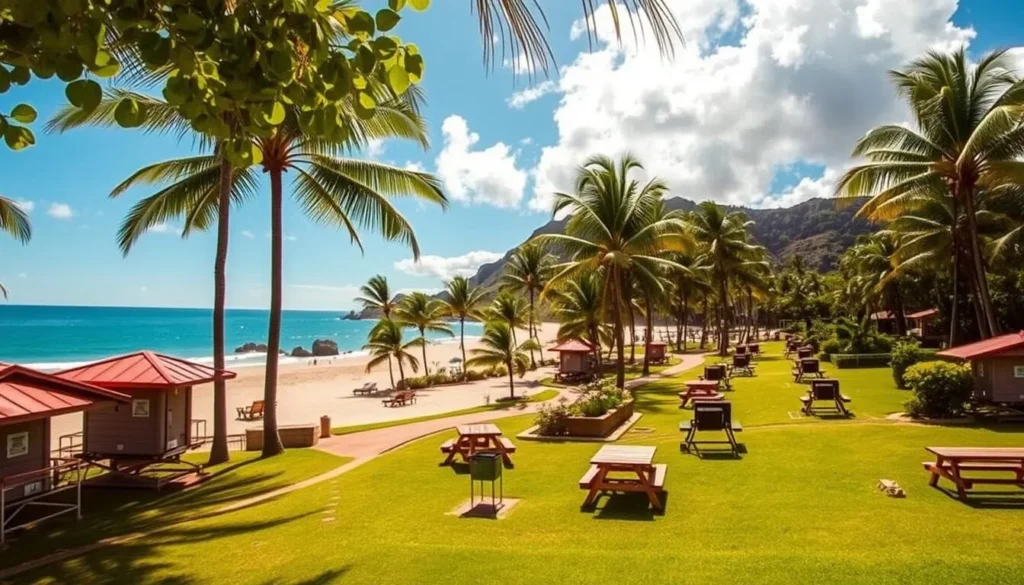
Food Options and Nearby Dining
You can grab a bite to eat at the Na Mea Ono Grill at Waimea Valley across the street, which serves local specialties like plate lunches and taro burgers. Alternatively, visit the numerous restaurants in nearby Haleiwa town for more dining options.
Best Times to Visit
The best times to visit Waimea Bay depend on your preferences. Summer months are ideal for swimming and snorkeling, while winter is best for witnessing big wave surfing. Weekdays are less crowded than weekends, making them a good option for those seeking a more relaxed experience.
Historical and Cultural Significance of Waimea Bay
Waimea Bay is more than just a beautiful beach; it’s a gateway to understanding Hawaii’s past. As you explore this iconic spot, you’ll discover its rich history and cultural significance. The bay, meaning “reddish water” in Hawaiian, was a pivotal meeting point between foreigners and Native Hawaiians. For centuries, it has been an important fishing spot, with traditional Hawaiian fishing practices still observed today. The 1950s marked a significant turning point in Waimea Bay’s history with the advent of big wave surfing, led by pioneers like Eddie Aikau. This blend of historical events and cultural heritage makes Waimea Bay a unique destination. You’ll experience the bay’s natural beauty alongside its profound historical importance, making it a truly unforgettable visit.
The above is subject to change.
Check back often to TRAVEL.COM for the latest travel tips and deals.


